| To demonstrate the feasibility of the system, an experimental mirror setup was built as shown in following Figure. The length of the baseline was set to 120mm, which is adequate for indoor usage. The diameter of the mirror was set to 80mm. The vertical FOV was set to more than for both upward and downward views. A 1/1.8 inch CCD camera with 1200 horizontal scan lines and a lens with 12mm focal length was used to capture the image. 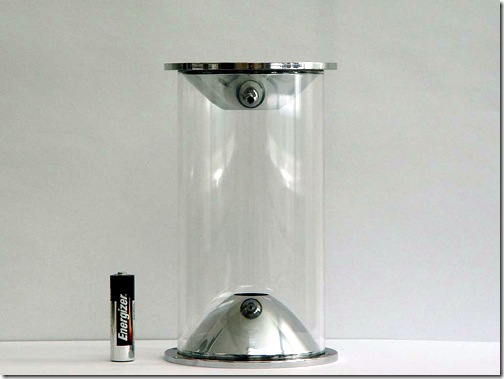
Following figure shows a catadioptric stereo image of our laboratory captured by the given experimental setup. All the corresponding points between each view are radially collinear. This fact eases the search process for the stereo matching. To convert the input image to stereo panoramic views, we computed the correspondence between the light ray directions from the virtual viewpoint and its projection in the acquired image with equations (1-3). Fig. 4(b, c) shows a rectified panoramic stereo pair. 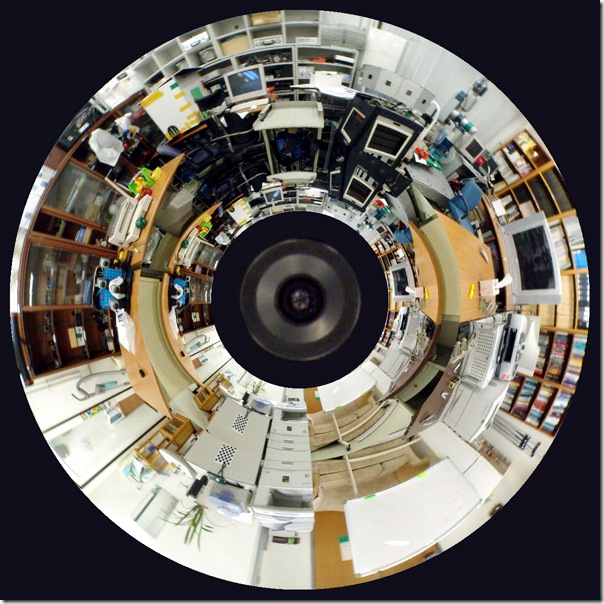
Stereo matching was conducted with simple window-based correlation search. Following figure shows the disparity map, in which nearby objects such as tables and a robot appear brighter than distant objects such as bookshelves and racks.
 Following figures are results of 3D reconstruction with the panoramic images and disparity map. We can observe the 3D sensation with the change of the viewing direction 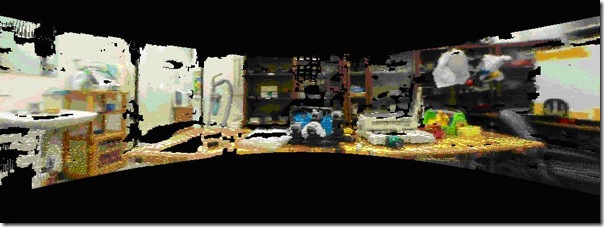

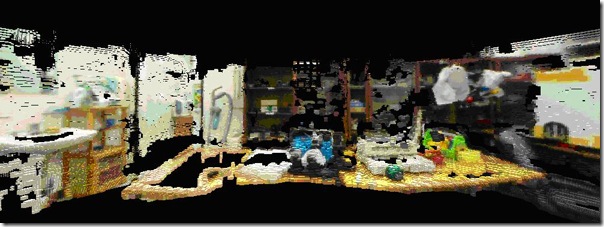
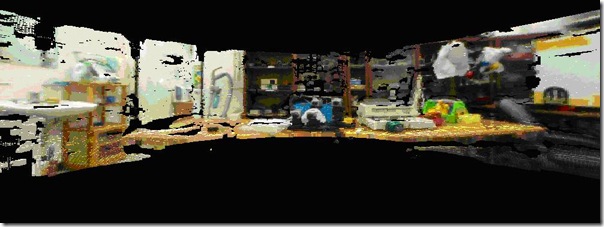

[ Demo ] Following figure is the vertical projection of the 3D reconstruction with a height of 10cm near the level of tabletop. We can observe the linear edges of nearby tables and objects on them. The disparity map and depth map show that the reconstruction accuracy is quite good. It reports that the maximum depth error is under 3% of the depth itself, except the ambiguous regions (specular region, textureless region, and a region with repetitive texture). 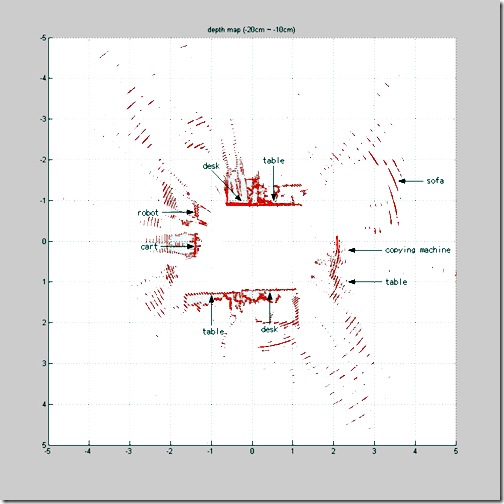
The result demonstrates that the proposed compact, wide-baseline panoramic stereo system with a single camera can provide sufficient accuracy for various machine vision applications in which the panoramic range measurements are important. It can be widely used for robotic applications (environment recognition, path planning, and obstacle avoidance), virtual reality, surveillance systems, and military applications. | 
 被折叠的 条评论
为什么被折叠?
被折叠的 条评论
为什么被折叠?


